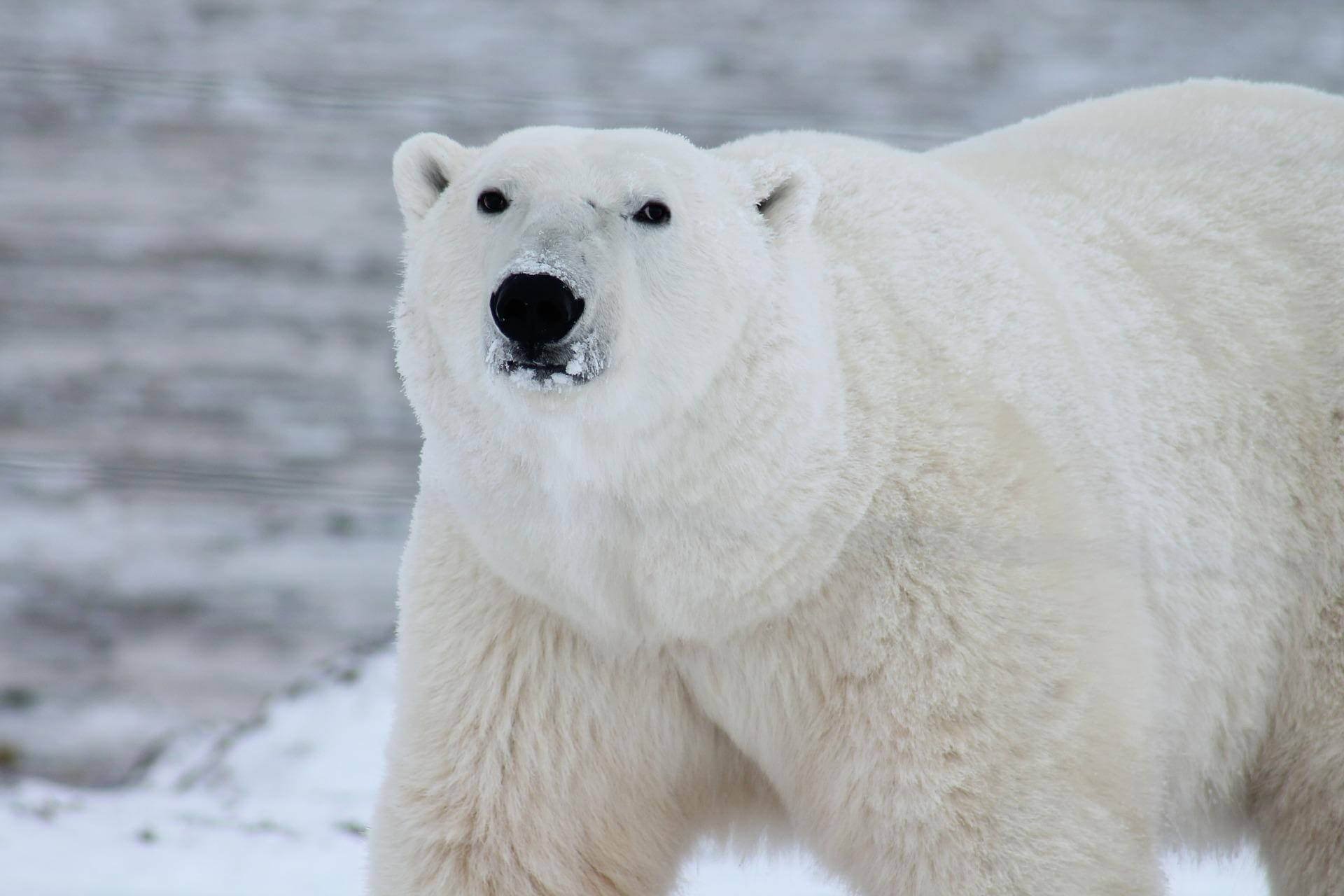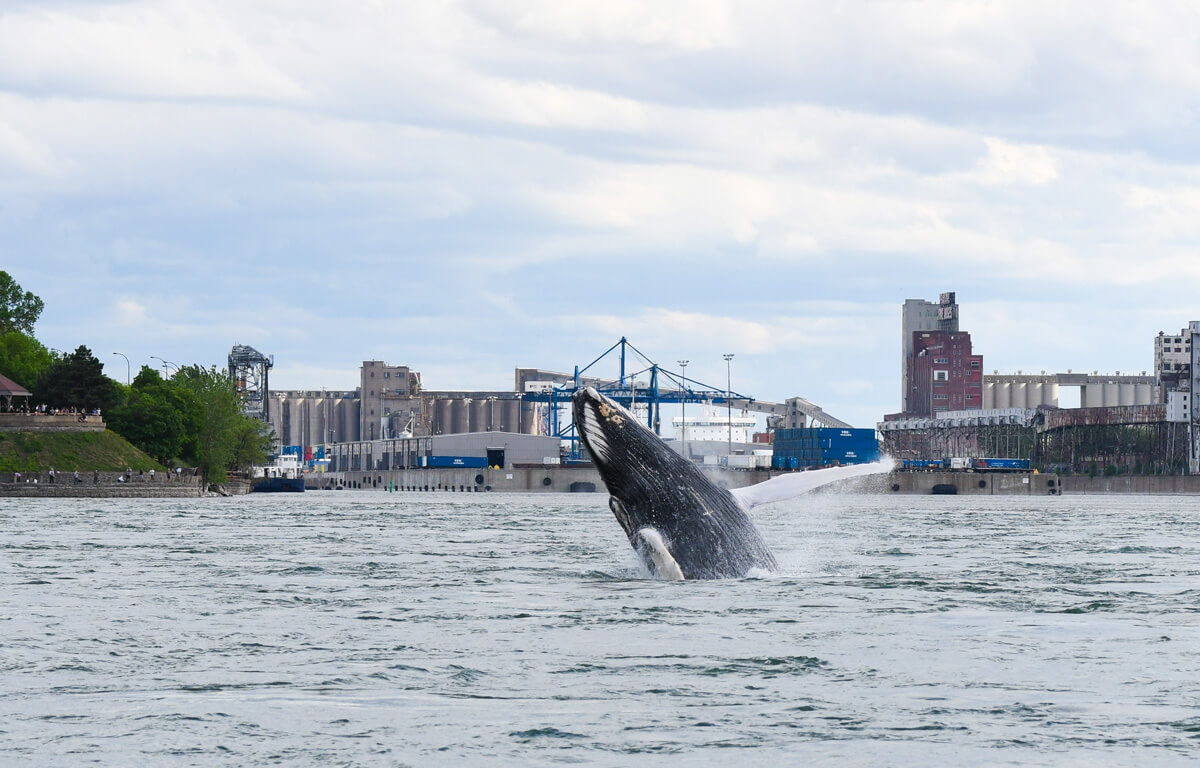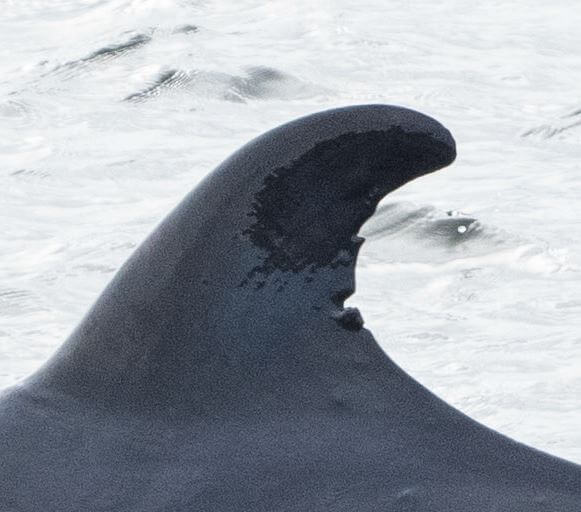This week, the most amazing marine mammal sighting is undoubtedly the presence of a polar bear in the Gaspé Peninsula. After all, just like the see otter or the sea lion, the polar bear is considered a marine mammal! Why is that? Because its existence and its life cycle depend on the marine environment and its inhabitants – seals and whales – for food.
Indeed, on Saturday April 30, a snow-white bear was seen by residents of Madeleine-Centre, causing surprise and excitement across the entire province. But the reasons for this highly unusual presence, thousands of kilometres south of the animal’s natural range, remain a mystery. But it could very well be that the climate imbalance caused by humans has something to do with it: reduced ice cover, scarcity of food resources, search for new habitats…
Like a whale in Montréal...
In any case, the adventure of this unfortunate climate refugee came to an end when wildlife protection officers made the decision to neutralize the animal on Sunday morning. The decision was controversial, and everyone would certainly have preferred a happier ending. But the message conveyed by this polar bear is clear: our actions are having an impact even in the Arctic. As veterinarian Stéphane Lair points out in an article in Le Devoir: “It is our dependence on fossil fuels that threatens polar bears.”
The unusual presence of an individual outside its normal range reminds many of the story of the young humpback whale that made headlines when it visited the Port of Montréal in 2020. Two years after this event, the reason for this whale’s presence so far upstream as well as the causes of its death remain unexplained.
Other than the polar bear, sightings in the Gaspé this week have been limited. “By this time of the year, I’ve usually already seen several large whales pass by. It’s been pretty calm this year,” laments a resident of Cap-des-Rosiers, who nevertheless mentions that there’s been good action bird-wise. Eiders, gannets and black scoters have been putting on a show. An observer from Gaspé Bay nevertheless notes “two harbour seals in L’Anse-aux-Cousins. They’re probably regulars who each have their favourite rock.”
Like a whale in Charlevoix...
It’s been a week of incongruous observations, to say the least. On April 29, a resident of Saint-Irénée films a dark back emerging at regular intervals, close to shore. Impossible to identify the species based on her footage, but it is obviously a rorqual. If the presence of a large whale so far upriver is rather uncommon, it is also not out of the ordinary nor a cause for concern. With capelin currently ‘rolling’ in the region, it is only natural that this source of fresh fish would attract predators.
Tuesday afternoon near Cap aux Oies, another Saint-Irénée resident was able to observe not dark backs but white ones… a handful of belugas on the go. That same morning, near the Rivière-du-Loup ferry terminal, one family was excited to spot a pod of about ten belugas, including what appeared to be a few juveniles.
In the Gulf of St. Lawrence, the first North Atlantic right whale of the season was spotted by a surveillance plane north of the Magdalen Islands on May 3. This sighting triggered a 15-day closure in specific fishing grids in the southern Gulf of St. Lawrence, north of the archipelago.
In the Bay of Sept-Îles, a minke whale and two harbour porpoises were observed, not to mention seals and numerous seabirds. Near Franquelin, a minke whale is often seen on the move. Large spouts were also spotted off Rivière-Pentecôte and Franquelin.
Like fish in water!
In the estuary, whales have been making their long-anticipated return these past few weeks, and sightings are on the rise. From Cap de Bon-Désir in Les Bergeronnes, photographer Renaud Pintiaux saw a humpback whale that had already been photographed at the same location on April 11. “It might be a young male that didn’t make the long migration this winter,” he comments. Over the course of the week, he also tallied several belugas and minke whales.
From the shores of the municipality of Essipit, one observer rattles off the marine mammals he has encountered: On April 28, it was a minke whale, a harbour seal and a grey seal. The next day, a minke whale and a beluga. The minke whale’s behaviour intrigues the observer: “With almost every breath, one side of its caudal fin comes out of the water, making its tail appear deformed.” Unfortunately, this individual is not featured in the minke whale catalogue maintained by Mériscope. “Also, we’ve never observed this type of behaviour before in a minke whale,” points out Dany Zbinden, the organization’s founder.
An early-rising birder posted atop the Tadoussac dunes is enjoying the show. “On Monday, May 2, there were two groups of belugas, at least four humpbacks including one that breached a good 30 times, plus a fin whale. They were really far away, in the middle of the river. On Tuesday morning, it was a fin whale and a minke whale. Finally, on Wednesday, I was greeted by breaching humpbacks not far from the Prince Shoal Lighthouse,” she notes. Whales are arriving in their feeding grounds where they feel at home, like fish in the water. Even if we can all agree that whales are mammals, not fish!
Have you seen a whale or a seal?
Let us know by sharing details of your observation or photos at [email protected] or on our Facebook page.










